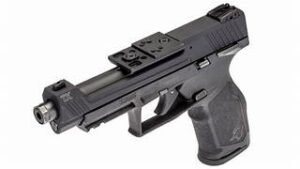In today’s unpredictable world, the quest for the best self defense knife isn’t just about personal safety – it’s about securing an added layer of protection and peace of mind. A self-defense knife isn’t just a practical tool for everyday tasks; it can also serve as a potential lifesaver in dangerous situations.

Key Features to Look for in the Best Self Defense Knife
When it comes to selecting the best self-defense knife, several key features deserve your attention:
1. Blade Size and Weight
The size and weight of a self-defense knife play a pivotal role in its effectiveness. Smaller knives are easier to conceal and carry discreetly, while larger ones offer greater reach and striking power. Striking the right balance between portability and functionality is essential.
2. Handle Design
The handle design is of utmost importance. A well-designed handle ensures a secure grip, even in wet or high-stress situations, reducing the risk of accidental slippage that could lead to injury. Look for ergonomic handles with textured or contoured surfaces for superior control and comfort.
3. Blade Shape
The blade shape is another crucial aspect. Different blade shapes serve different purposes, each with its advantages and limitations. Tanto and drop-point blades are often preferred for self-defense due to their strength and piercing capabilities, enabling quick penetration while minimizing the risk of accidental injury.
4. Opening Mechanism
Consider the opening mechanism when choosing a self-defense knife. Many models feature assisted opening mechanisms or thumb studs that enable swift deployment with one hand, a critical factor in emergencies where every second counts.
Types of Self-Defense Knives
There are several types of self-defense knives available, each catering to different preferences and needs:
1. Folding Knives
Folding knives, also known as pocket knives, are versatile options with blades that fold into the handle, making them easily portable and discreet.
2. Fixed Blade Knives
Fixed blade knives, renowned for their durability and reliability, have blades securely attached to the handle, offering exceptional stability and strength.
3. Neck Knives
Neck knives are designed for concealed carry and quick access, with sheaths that allow them to be worn around the neck for discreet and rapid deployment.
4. Push Daggers
Push daggers, also known as punch daggers, have a unique design that enables a firm grip within a closed fist, providing excellent control in close combat scenarios.
By understanding these key features and the different types of self-defense knives available, you can make an informed choice that aligns with your personal safety requirements and local regulations. Remember that the right self-defense knife combines functionality with ease of use, ensuring you are well-prepared to protect yourself effectively when it matters most.
The Best Self Defense Knife
Benchmade 537-2301 Bailout Axis
- 3.38-inch blade made of CPM-M4 steel
- Lightweight and durable, easy to deploy
- Reversible pocket clip, glass breaker
Cold Steel Recon 1 Series
- Ideal for tactical and self-defense situations
- Features a razor-sharp blade made from Japanese AUS-8A stainless steel
- Exceptional cutting power and edge retention
- Tri-Ad lock mechanism for added security
- Prevents accidental closure during use
- G10 handle provides superior grip when wet
- Ensures maximum control in high-stress situations
SOG Pentagon OTF
- 3.5-inch blade made of S35VN steel
- Fast-opening knife with durable aluminum handle
- Safety lock to prevent accidental deployment
Kershaw Outlier
- 3.25-inch blade made of 8Cr13MoV steel
- SpeedSafe assisted opening mechanism
- Textured G10 handle, budget-friendly
Columbia River Knife and Tool
- High carbon stainless steel blade takes edge well
- Bead blast finish reduces reflection
- Resin resin-infused fiber handle
- Durable thermoplastic sheath with mounting opts
- Lightweight and easy to carry
CRKT Inazuma No Ken
- Deadbolt lock provides incredible strength
- Flipper deploys the blade fast
- IKBS ball bearing pivot deploys the blade smooth
- D2 blade steel for excellent edge retention
- G10 handle provides grip in all conditions
TOPS Street Scalpel
- Deadbolt lock provides incredible strength
- Flipper deploys the blade fast
- IKBS ball bearing pivot deploys the blade smooth
- D2 blade steel for excellent edge retention
- G10 handle provides grip in all conditions
Cold Steel Engage
- 3.5-inch blade made of S35VN steel
- Durable G10 handle
- Tri-Ad lock for added safety
- Crossover knife for both self-defense and utility use
Spyderco Delica 4 FRN Wharncliffe
- 2.88-inch blade made of VG-10 steel
- Lightweight and easy to use
- Durable FRN handle
- Back lock for added safety
Blade Materials and Sharpness for Finding the Best Self Defense Knife
Blade Material Crucial: When selecting a self-defense knife, the choice of blade material is vital as it affects sharpness, durability, and wear resistance.
Stainless Steel Popular: Stainless steel blades are popular due to their corrosion resistance and low maintenance.
Variety of Grades: Stainless Steel comes in grades 440C, VG-10, and S30V, each offering different sharpness and edge retention levels.
Carbon Steel for Strength: Carbon steel blades offer superior edge retention but require more maintenance due to rust susceptibility.
Titanium’s Strength: Titanium blades are strong, corrosion-resistant, and non-magnetic, making them discreet for carry.
Sharpness Factors: Sharpness depends on blade geometry and heat treatment during manufacturing.
High Grind for Sharpness: Knives with high grinds are generally sharper but may trade some durability.
Heat Treatment Matters: Proper heat treatment ensures long-lasting sharpness.
Reputable Brands: Choose trusted brands known for blade quality.
Consider Customer Reviews: Read customer reviews and recommendations for insights.
Legal Considerations for Self-Defense Knives
- Know Local Laws: Abide by your jurisdiction’s laws regarding self-defense knife possession and use.
- Concealed Carry Regulations: Understand the legality of carrying concealed knives; permits may be required in some areas.
- Blade Length Restrictions: Be aware of blade length limits in public places to ensure compliance.
- Restricted Knife Types: Some regions may restrict certain knife types, such as switchblades or double-edged blades.
- Responsible Usage: Even when legally allowed, always use self-defense knives responsibly within the law.
Self-Defense Techniques
- Proper Grip and Stance: Maintain a solid grip and stance for control and balance.
- Target Identification: Identify vital areas for effective self-defense strikes.
- Slashing and Stabbing Techniques: Learn basic slashing and stabbing techniques for different situations.
- Create Distance and Escape: Prioritize creating distance and escaping when possible.
Maintenance and Care for Self-Defense Knives
- Regular Cleaning: Clean the knife after use to prevent debris buildup.
- Proper Lubrication: Apply suitable oil to reduce friction and corrosion.
- Regular Sharpening: Keep the knife sharp with a sharpening stone or honing rod.
- Proper Storage: Store the knife in a suitable sheath or case to prevent damage.
Expert Advice and User Reviews
- Consult Experts: Seek advice from self-defense experts, martial arts instructors, or law enforcement personnel.
- Online Forums: Read discussions on self-defense and knife enthusiast forums.
- Review Websites: Check equipment review websites for professional assessments.
- User Feedback: Pay attention to user reviews on e-commerce platforms for real-life performance insights.
Considering these aspects, you can make an informed decision when choosing a self-defense knife that suits your needs while staying compliant with local laws and ensuring responsible usage.
Conclusion – Best Self-Defense Knife
First, selecting the right self-defense knife is a multifaceted decision that involves considerations ranging from blade materials and sharpness to legal aspects, self-defense techniques, maintenance, and expert advice. It’s essential to strike a balance between functionality and adherence to local laws, ensuring that your choice empowers you to protect yourself responsibly within the boundaries of the law.
The blade material you choose, whether stainless steel, carbon steel, or titanium, will significantly impact the knife’s performance, maintenance requirements, and overall longevity. Understanding the factors influencing sharpness and seeking reputable brands with positive customer reviews will help you select wisely.
Next, legal considerations should never be overlooked, as compliance with local regulations is paramount. Knowing the rules regarding concealed carry, blade length, and restricted knife types in your jurisdiction is essential for responsible ownership.
In addition, learning self-defense techniques, including grip, stance, target identification, and striking methods, enhances your ability to use a self-defense knife effectively when confronted with a threat. Creating distance and prioritizing escape should always be the primary goal.
Finally, proper maintenance and care are key to keeping your self-defense knife in top condition, ensuring its reliability in critical moments. Regular cleaning, lubrication, sharpening, and thoughtful storage are essential practices.
Lastly, seeking expert advice from professionals in the field and considering user reviews on various platforms provide invaluable insights to guide your decision. By considering all these factors, you can confidently select a self-defense knife that aligns with your needs and, most importantly, prioritizes safety, responsibility, and compliance with the law in any self-defense situation. Remember, knowledge and preparation are the keys to personal safety.












